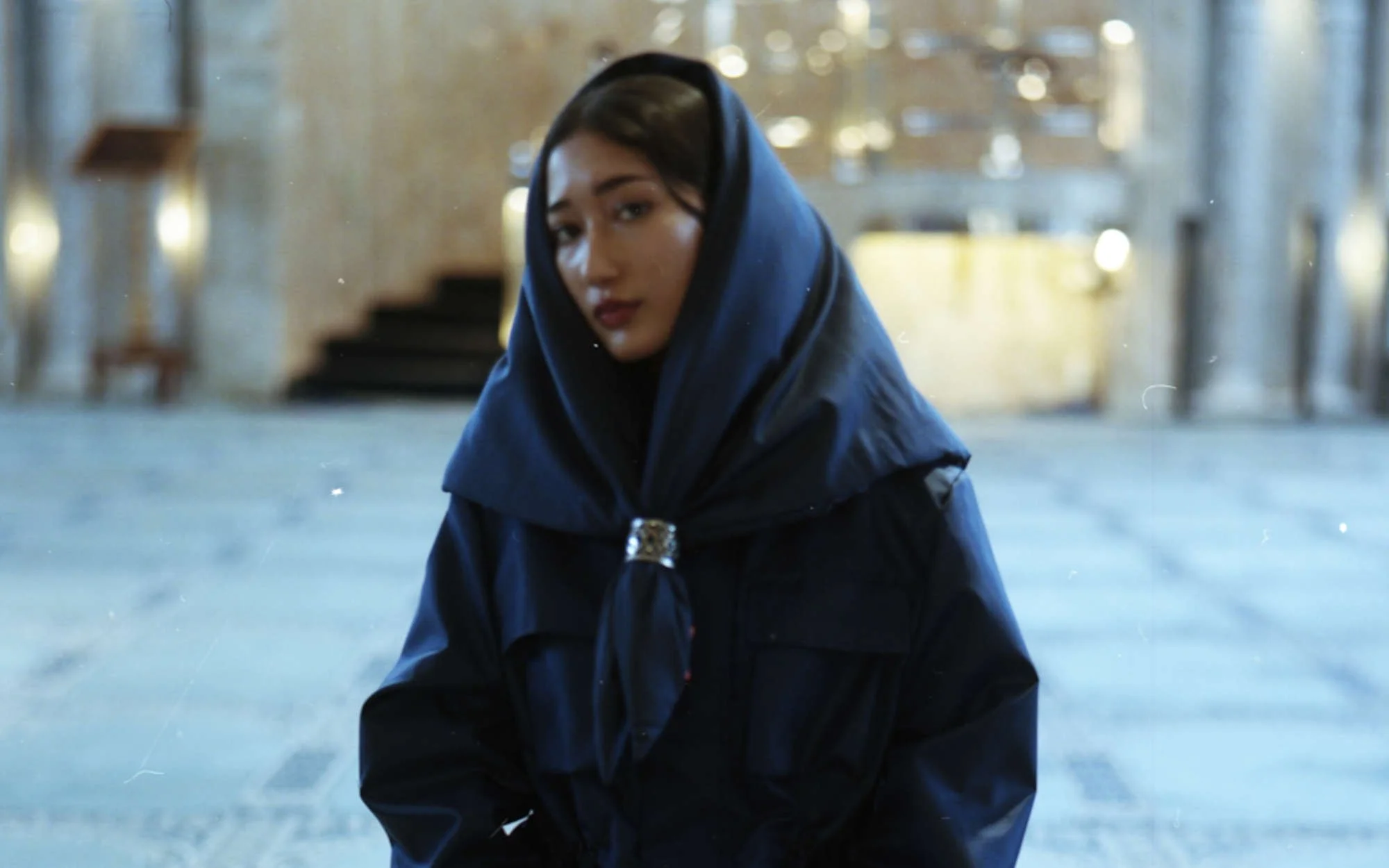Nataal premieres Asa Sadan’s short film paying homage to the resilience of his family's matriarchs
In Imran Mohamed’s new short film, ‘In Loving Memory’, he pays his respects to the women in his family whose courage and sacrifices have made it possible for his generation of young South Africans to thrive. The multi-disciplinary talent is founder and creative director of Asa Sadan, a fledgling luxury brand drawing on his heritage and experiences as a member of the Asian-African diaspora in Cape Town to create a dialogue around what progress and representation looks like in contemporary South Africa. Having previously studied real estate and fashion at home, Mohamed completed his MBA at London’s Central Saint Martins last year, culminating in Asa Sadan’s debut capsule range of tailored pieces steeped in indigenous craftsmanship.
Named after his grandmother – Asa various means ‘beautification’, ‘adornment’, ‘might’, ‘power’ and ‘capability’ – it’s fitting that this first brand film is an ode to her. Through its references to divinity (the mosque), purity (water/ocean) and stillness (home), ‘In Loving Memory’ is both an audio-visual prayer and a beautiful rebuttal to oppressive constructs. Nataal speaks to Mohammed about this very special and deeply personal act of ancestral love.
What was your intention behind ‘In Loving Memory’?
With the foundations of Asa Sadan being built upon the visions of powerful women, we felt it only right that our first film project should serve to acknowledge this. ‘In Loving Memory’ is both narrow and broad within its reference. First and foremost, it is in memoriam of the late Asa Sadan (my grandmother) and Yasmin Wells (my aunt), two of the three women who have instilled this practice within my DNA, with the third being my mother. The film is also dedicated to Nazimoonissa ‘Naju’ Parker, whose house the project was shot in, who was once a talented artisan with prospects to work and train in Paris, though unfortunately inhibited by systems that did not support her. May they be granted the highest places in Paradise.
What does your mother make of the film now she’s seen it?
She has always been my number one supporter, so naturally she is proud of what I create and communicate through my work. My grandmother and my aunt would undoubtedly share the same sentiments as my mother. This piece is first and foremost dedicated to them.
What emotions do you hope the film will elicit in viewers?
Everyone can relate to the loss of a loved one, especially over the past two years. So, in this film, we tried to portray this loss not only as a process of grieving, but also as a beacon of hope that lies within continuing the legacy that person has left behind. We all process, grieve and heal differently. However, the reality of the end of life in its human form is something we all face.
As such, the score of the film was designed using two types of frequencies: alpha and binural, both of which are aimed at healing and focusing the heart, mind, body and spirit.
And it will have a special resonance locally.
Yes. From a more local perspective, all South Africans of colour share a commonality in that our forefathers fought tirelessly against a system which was never created to serve them. Those who have created the opportunities that we experience today as a generation of ‘born frees’ had to face unimaginable obstacles in order to realise their dreams for future generations. This film is dedicated to those whose vision was to create a new world for us to succeed in the spaces they could never occupy during their lifetimes.
We also hope to elicit feelings of hopeful nostalgia. Every Muslim kid in South Africa who was lucky enough to grow up with their grandparents would immediately recognise the location setting as a fond childhood memory. Remembering where we come from is essential to navigate where we are yet to go. Staying true to our identity is key in creating authentic art. A generational view will allow us to overcome today’s obstacles in order to create a better world for those who will come after us.
What can you tell us about the clothing in this film and how these pieces relate to the narrative?
I do not distinguish between menswear and womenswear per se, but instead classify my designs as masculine and feminine silhouettes, which are to be openly interpreted by the wearer. In this film, we showcase various new products that we are developing and releasing throughout this year, such as the technical wrap skirt, high neck fitted top, M65 jacket and oversized shirts.
The garments were inspired by traditional looks of my grandparents’ era. Driving through Muslim neighbourhoods in Cape Town, you would see various interpretations of these sorts of silhouettes, particularly with older aunties.
You work across fashion, film, special design and furniture. How do they inter-link and what is your ultimate aim with your practice?
With all my creative work, regardless of medium, I always look to historical narrative and analysis as a foundation for building the future. And the ultimate aim is to create products that serve people. My intention is to build an archive of works representative of the underrepresented and the misrepresented, to tell our history through our lived experience, rather than the external narratives that were taught to us. I intend for my work to not only serve a functional purpose, but for the identity of my people to be immortalised within the works for future generations to build upon. I hope to continue working in a multidisciplinary and interdisciplinary fashion, and expend the medium from apparel and media to housing, education, infrastructure and enterprise development.
Creative direction and executive production Imran Mohamed
Direction Bathandwa Ngwendu
Director of photography Sulaiman Peck
Photography Luke Doman
Colouring Ciretta Frezza
Audio Junaid Baker
Starring Mira Jaan
Poster and typography Goodbye Studios
Words Helen Jennings
Visit Asa Sadan
Published on 16/03/2022








